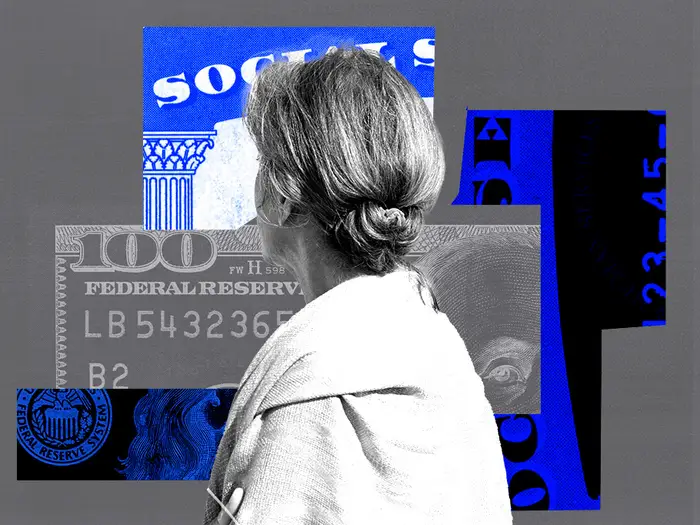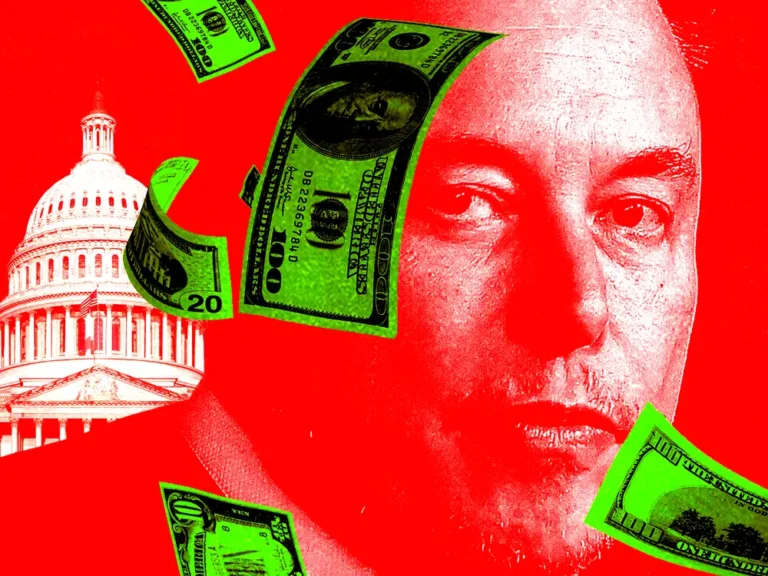Bracing for Trump tariffsExperts say a crackdown on imports could drive up prices by this time next year

In the days after the election, I caught myself doing some strange Googling. Mostly it was low-grade curiosity about the economic implications of Donald Trump’s win — specifically, whether there was anything I could do to prepare for him to slap stiff tariffs on goods imported into the United States. I briefly weighed whether I should buy a car. Not because I actually want a car while living in New York City. But what if this is my last chance before prices go up? A news story about a potential hike in iPhone prices made me realize I had no idea when I last replaced mine. And even though I’m not much of a shopper, I wondered whether to buy a new pair of shoes.
I’m not alone in this light bout of tariff terror. Over the past month, “things to buy before tariffs” has become a breakout Google search, and there’s plenty of chatter about it on Reddit, too. Anecdotally, I’ve found that “what to do ahead of tariffs” keeps coming up in conversation — friends fretted about tariff-triggered inflation at an early-November Friendsgiving celebration, and my mom mentioned that her decision to finally buy a new car was triggered in part by worries that inflation will return under Trump. Companies are already talking about raising prices in anticipation of the new administration. The other day I got a marketing email from Jolie, which makes filtered showerheads, with an “important message” about tariffs. “If you’re considering buying a Jolie,” the email said, “now is a great time to lock in our current prices.” The implication was clear: Buy now, before any tariffs take effect. I did not expect a TikTok-popular showerhead company to raise my blood pressure over prices, but here we are.
It’s unclear whether Trump will make good on his campaign promises to slap a 60% tariff on goods from China and tariffs of 10% to 20% on imports from everywhere else. And even if he does, it’s not clear whether they’ll fuel inflation, as many economists have warned. (The Yale Budget Lab estimates that Trump’s tariffs, as proposed, would drive up prices by as much as 5.1%, costing households an extra $7,600 a year.)
Everybody’s trying to protect themselves. They’re trying to figure out what to do. And frankly, no one knows.
“We don’t know the nature, the magnitude, or the timing of these tariffs,” says Greg Daco, the chief economist at EY-Parthenon. “So we don’t necessarily know the impact of the potential shocks on the economy.”
But what is clear is that American consumers and businesses are already freaking out over tariffs. “Everybody’s just in kind of a state of anxiety and scratching their heads,” says Mary Lovely, a senior fellow at the Peterson Institute, an economic think tank. “Everybody’s trying to protect themselves. They’re trying to figure out what to do. And frankly, no one knows.”
Let’s start with how businesses are planning for tariffs. For companies that import products or components from abroad, tariffs would be “the least surprising train wreck ever,” says Ernie Tedeschi, the director of economics at the Yale Budget Lab, who previously worked for the Biden administration. “For companies that can divert their supply chains in a way to minimize tariffs, they are certainly already thinking about that.” The fashion brand Steve Madden, for example, said in its latest earnings call that it would reduce sourcing from China — a scenario it’s been anticipating for quite some time.
Paul Brashier, a vice president of global supply chain for ITS Logistics, has been working with clients on tariff-related contingency plans since the start of the year. Thanks to muscle memory from the tariffs Trump imposed in 2018, he says, many businesses are speeding up their shipping schedules — racing to get as many goods as possible into the country before any new tariffs are implemented.
“Shippers realized that tariffs were coming into place, and they all started shipping heavy to get ahead of those tariffs,” Brashier tells me. That rush, in turn, pushes up rates for shipping containers, causes congestion at ports, and increases the cost of inland transportation and storage. In other words, the fear of tariffs could drive up prices before a single tariff is actually in place. Freight costs, Brashier says, “will be your first canary in the coal mine.”.
But there’s only so much preparing companies can do. If you’re thinking about moving production from China, say, it’s hard to know where to go. Vietnam might look good, but what if Vietnam gets hit with tariffs, too? “It’s one thing to say we’re trying to get you to move out of China,” says Stephen Lamar, the CEO of the American Apparel and Footwear Association, a trade association. “But then what is trade policy saying about where you should move to?”
Small businesses have few options. Mike Brey, the owner of Hobby Works, saw tote bags he sources from China get hit with tariffs during Trump’s first term. But while small businesses have a reputation for being nimble, that’s not true on the import side. “We can’t easily pack up and move to Mexico,” Brey says. “It’s harder for a small company to move their manufacturing someplace else, especially when they’re fighting against larger companies for that same manufacturing time.” Because of the hurdles, they didn’t move production out of China, instead swallowing the increased cost before passing it on to customers.
Whether or not tariffs drive up costs, experts say companies are likely to use them as an excuse to raise prices. “It’s something we saw in this inflationary period,” says Lindsay Owens, the executive director of the Groundwork Collaborative, a progressive think tank. “It does contribute to this kind of vicious circle in terms of prices for Americans and a virtuous circle in terms of profits for companies.” In 2018, when Trump imposed tariffs on washing machines, they got more expensive. So did dryers, even though they weren’t subject to tariffs — companies figured customers would assume that two related products were subject to the same inflationary forces.
If the cost of imports goes up, even companies whose products are American-made are likely to get in on the price hiking. “It’s like a Christmas gift,” Tedeschi says. “They have this windfall given to them in their lap. They’re like: ‘Wait, you’re telling me that my competitors are now forced to raise their prices 20%? Well, I’m going to raise my prices 19% and I’ve still got the competitive edge. But now I have 19% of pure profit I can just add on top.’ I think that’s where it’s really going to sting for consumers.”
So how can consumers prepare for tariffs? The economists I spoke with didn’t have a lot of solid answers. They did, however, have some suggestions about what consumers can keep an eye on. Many items, including apparel, electronics, furniture, and cars, are expected to get pricier when Trump’s proposed tariffs go into effect. And we’re likely to get a heads-up, because tariffs often require a comment period, so consumers keeping track of the news will have an opportunity to get ahead of major price increases.
“If they can accelerate big purchases they know they’re going to make, they should do that,” says Lovely, the senior fellow at the Peterson Institute. “So if you know you’re going to need to buy a new laptop or if you’re going to need to buy a new Apple Watch, those are things that haven’t been taxed at all yet.”
Tedeschi says consumers can do the research now on the sources of any big purchases they’re planning. But he emphasizes that just because something is made in the USA, that doesn’t mean all the parts are. “Even your Ford F-150 has a lot of imported parts,” he says. “So you’re not going to totally avoid tariffs by buying a domestic car.”
Some consumers are already getting a jump on big purchases. On Reddit, one person said they were planning to buy some new tires sooner rather than later, and perhaps get an extra phone. Others mentioned getting new laptops and computers, predicted that Temu and Shein products would get more expensive, and even mulled starting a garden in case food prices rise.
It’s just wave after wave of uncertainty.
So if Trump winds up imposing tariffs, when can consumers expect to see price hikes? Brey, the Hobby Works owner, says it won’t take long. “Increased tariffs get passed on to the consumer really, really quickly — like one manufacturing cycle away,” he says. “That’s it — three to six months tops.”
Daco, the chief economist at EY-Parthenon, predicts that higher prices won’t kick in until late 2025 or early 2026. But he warns against trying to do much anticipatory buying. “You should consider the possibility that the price of these goods may increase,” he says. “But you can’t time policy — it’s impossible.”
The truth is we’re headed into a period of unpredictability and upheaval. Savvy consumers can be on the lookout for tariff announcements, increases in freight prices, and companies’ comments on earnings calls about their pricing and sourcing plans. But if Trump makes good on his promise to implement across-the-board tariffs, there may be nowhere to hide.
“What do consumers and small businesses hate more than anything? That is uncertainty,” Brey says. “And in this case, it’s just wave after wave of uncertainty.”






